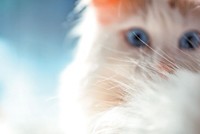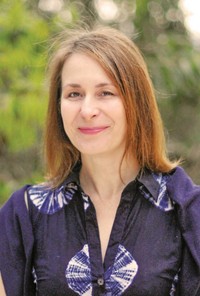Advertisement
Grab your lab coat. Let's get started
Welcome!
Welcome!
Create an account below to get 6 C&EN articles per month, receive newsletters and more - all free.
It seems this is your first time logging in online. Please enter the following information to continue.
As an ACS member you automatically get access to this site. All we need is few more details to create your reading experience.
Not you? Sign in with a different account.
Not you? Sign in with a different account.
ERROR 1
ERROR 1
ERROR 2
ERROR 2
ERROR 2
ERROR 2
ERROR 2
Password and Confirm password must match.
If you have an ACS member number, please enter it here so we can link this account to your membership. (optional)
ERROR 2
ACS values your privacy. By submitting your information, you are gaining access to C&EN and subscribing to our weekly newsletter. We use the information you provide to make your reading experience better, and we will never sell your data to third party members.
Biological Chemistry
Guarding Our DNA
Art project exposes the vulnerability of the genetic material we unintentionally leave behind
by Linda Wang
June 24, 2013
| A version of this story appeared in
Volume 91, Issue 25

After chewing a piece of gum, you casually toss it in the garbage and think nothing of it. But what if a few days later, a stranger picks up that piece of gum and sequences your DNA using the trace amount of genetic material from the saliva that you’ve left behind? And what if the stranger then takes the information in your genetic code and reconstructs your likeness? Starting to get uncomfortable?
Taking this scenario further, what if you have a genetic predisposition toward a disease or a disorder that you’re unaware of, and suddenly your DNA is in the hands of a stranger who has the potential to expose your personal information to the world? Now you’re a victim. What laws exist to protect your genetic material from being misused? Are they adequate?
These are just a few of the questions that Heather Dewey-Hagborg raises with an art exhibit called “Stranger Visions.” Dewey-Hagborg used genetic analysis and three-dimensional printing technology to produce facial sculptures of anonymous strangers whose DNA she’s collected from chewing gum, cigarette butts, strands of hair, and other items that people have left behind in subways, bathrooms, and other public places around New York City.
IDENTITY THEFT



Credit: Heather Dewey-Hagborg (all)
Faces of strangers derived from DNA Dewey-Hagborg collected from public places around New York City.
“The point isn’t that I can know everything about a person from a piece of chewing gum,” said Dewey-Hagborg, a Ph.D. candidate in electronic arts at Rensselaer Polytechnic Institute. “Rather that I, as an amateur, can know as much as I do and potentially can know a whole lot more.”
She discussed the societal and ethical implications of public genetic material during a policy discussion stemming from her artwork held earlier this month at the Woodrow Wilson International Center for Scholars, in Washington, D.C.
“One of the biggest reasons people worry about genetic privacy is the risk of its stigmatizing effects,” said Sonia M. Suter, a law professor at George Washington University.
For example, what if during his first presidential election campaign the public learned that Ronald Reagan had the gene for Alzheimer’s disease? asked Nancy J. Kelley, founding executive director of the New York Genome Center. How would that have changed the course of history?
Dewey-Hagborg began her art project after noticing how much genetic material humans shed every day. “I started seeing this forensic evidence everywhere, from bathrooms to sidewalks to bars to the subway,” she said. “I was really struck by this idea that the very things that make us human—hair, skin, saliva, and fingernails—become a real liability for us as we constantly shed them in public. Anyone could come along and mine them for information.”
Dewey-Hagborg said she immersed herself in the basics of genetic analysis after taking the three-week “Biotechnology Crash Course” at Genspace, a community biolab in Brooklyn. Working in a lab at Genspace, she extracted DNA from her collected samples and used the polymerase chain reaction to amplify certain regions of the DNA that correspond to specific physical traits. She then used a customized computer program to produce 3-D models of her subject’s faces based on those traits. A 3-D printing company helped her produce the sculptures.
Dewey-Hagborg noted how easy it was for her as a layperson to analyze someone else’s DNA. “One concern I have is that this technology will simply reinforce cultural stereotypes that are already so problematic and potentially become a new form of racial profiling,” she said.
“We’re at a time now where it’s just going to be easier and easier for somebody walking down the street to get a great deal of information about us,” Suter noted. “If it becomes commonplace, our notions about what is appropriate and what is normal may change, just in the way that privacy tastes may be changing online with the Internet.”
Dewey-Hagborg agreed. “As our culture becomes more open, and as genetic information becomes more accessible, we also have to think legally about the constraints we need to have on this kind of work,” she told C&EN. “We need to create checks and balances to make sure that it will play out to the benefit of society, rather than creating a society that is even more monitored and has us constantly worrying about what we’re leaving behind.”




Join the conversation
Contact the reporter
Submit a Letter to the Editor for publication
Engage with us on Twitter